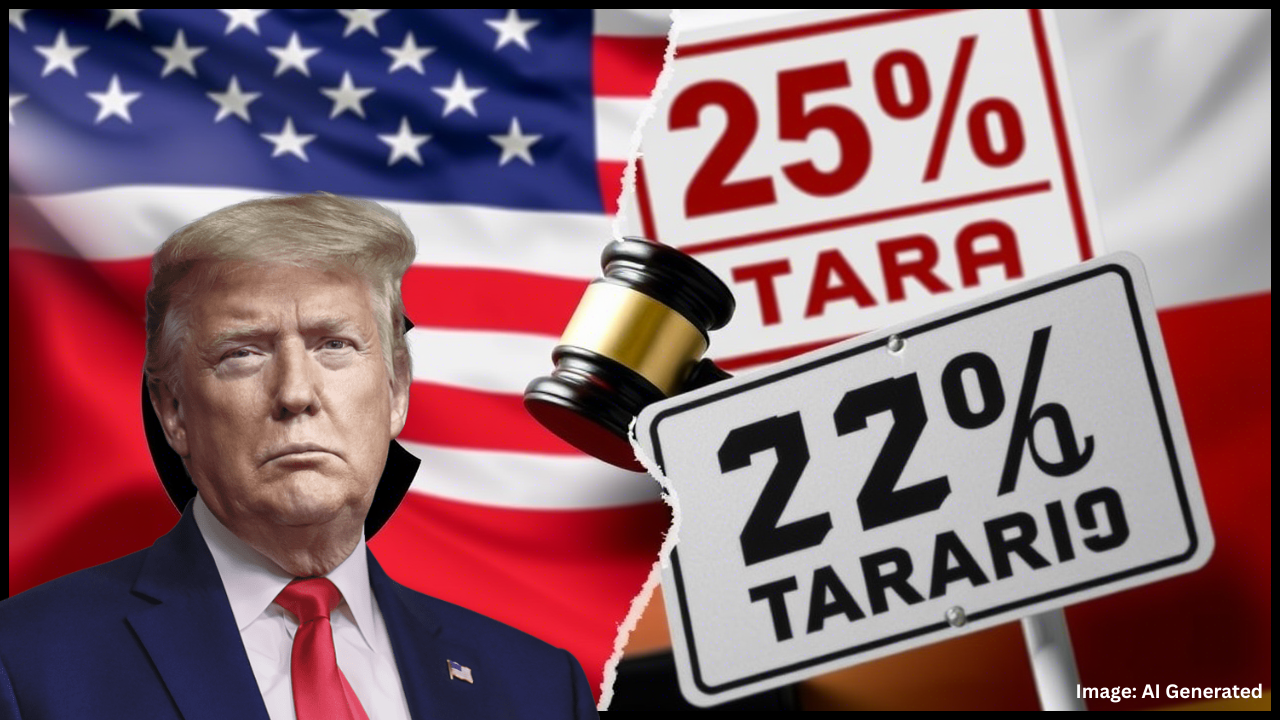President Donald Trump’s recent announcement of new tariffs has once again brought intense focus to ongoing global trade tensions. This time, the spotlight is on major U.S. companies like Apple and Tesla, which stand to face significant challenges. These tariffs, primarily targeting Chinese-made goods, aim to address longstanding trade imbalances and promote domestic manufacturing. However, while the intention is to strengthen American industry, the consequences are far-reaching and could affect nearly every American household.
In this comprehensive guide, we will explore how these tariffs function, who will be impacted most, and what both consumers and professionals should expect as these policies take effect over the coming months and potentially years.
Quick Summary
- Apple and Tesla face significant increases in production and import costs due to the new tariffs imposed on Chinese imports.
- Apple projects an additional $900 million in expenses for the current financial quarter because of these tariffs.
- Tesla could face up to a 25% duty on imported vehicles and additional duties on parts, complicating its supply chain and potentially increasing consumer prices.
- Major retailers such as Walmart, Target, and Amazon warn of impending price hikes across a wide range of consumer goods.
- Market reaction to the tariff announcement was notably negative, with key stock futures dropping by approximately 4%.
- Consumers should anticipate higher prices on products ranging from electronics to everyday household items.
- Experts warn of potential inflation and retaliatory trade actions that could complicate global commerce.
Why Tariffs Are Back on the Table
President Trump has consistently used tariffs as a strategic tool to influence economic and trade policies, especially targeting China, which has been at the center of U.S. trade disputes for several years. In this latest move, the focus is to encourage companies to bring manufacturing operations back to the United States and reduce the country’s heavy reliance on imported goods from China.
The administration argues that the U.S. has lost billions of dollars due to unfair trade practices, including intellectual property theft and subsidized industries. By imposing tariffs, the government aims to create more domestic jobs and stimulate innovation within the U.S. manufacturing sector.
However, experts and critics warn that tariffs often lead to unintended consequences, including increased costs for businesses that rely on imported materials, reduced profit margins, and ultimately higher prices for consumers. These additional expenses may also impact investors and slow economic growth.
Tariffs work by placing a tax on goods imported into the country, which means companies must pay extra fees to bring products or components into the U.S. This tax can be passed along to consumers, who then pay more for goods like smartphones, cars, clothing, and household items.
Market Reaction – The Immediate Impact
Nasdaq Futures and Major Stocks Experience Decline
Following the announcement of the new tariffs, Nasdaq futures dropped approximately 4%, reflecting immediate apprehension among investors about the potential economic fallout. Major tech companies like Apple and Tesla suffered sharp declines in after-hours trading, with Apple’s stock falling by around 7% and Tesla’s dropping by nearly 8% (Moneycontrol).
This market reaction is more than just numbers fluctuating; it highlights the very real concerns investors have about rising production costs and the potential for global supply chain disruptions. When tariffs increase the cost of imported goods, companies face squeezed profit margins, slower growth prospects, and uncertain stock valuations.
Stock market reactions often serve as early warnings about economic shifts. For companies like Apple and Tesla, which are heavily reliant on global supply chains, tariffs can significantly affect their business models and investor confidence.
Apple – iPhones, iPads, and Higher Consumer Costs
$900 Million in Additional Costs for the Current Quarter
Apple is perhaps one of the most visible and directly impacted companies by the new tariffs. The technology giant imports nearly 50 million iPhones annually from China, along with other products like iPads and MacBooks. According to Business Standard, Apple anticipates incurring an additional $900 million in costs during the current financial quarter due to these tariffs.
No Exemptions Granted Despite $500 Billion U.S. Investment Commitment
Despite a significant pledge to invest $500 billion in the U.S. economy over the coming years, Apple was not granted an exemption from the tariffs. This means the company must absorb the increased costs or pass them on to consumers, potentially leading to higher prices for popular Apple products.
This decision reflects the administration’s firm stance on tariffs and highlights the limited scope for large corporations to avoid these duties. For consumers, this could mean paying more for new iPhones, iPads, MacBooks, and other Apple devices in the near future.
To put this in perspective, a $900 million increase in costs could translate to an average rise of $18 on each iPhone if Apple decides to pass the entire cost to consumers. While Apple often tries to absorb some costs to remain competitive, sustained tariffs could make higher prices inevitable.
Tesla – Electric Vehicle Ambitions Meet Tariff Challenges
Tesla operates a complex, globally integrated supply chain with significant reliance on components manufactured in China. The new tariffs threaten to disrupt this network and increase operating costs substantially.
- Tesla will face a 25% tariff on most imported vehicles, increasing the cost of cars imported into the U.S.
- Additional tariffs on imported parts may further disrupt production schedules and inflate expenses.
As reported by IG, Tesla could be forced to raise vehicle prices to offset these increased costs or alternatively absorb the losses, which would negatively affect its profitability and competitive positioning in the electric vehicle market.
Tesla’s challenge is complicated by its goal to make electric vehicles affordable for the average consumer. Higher tariffs could push prices above what many customers can pay, potentially slowing sales growth in a critical market.
The Retail Sector – Price Increases on the Horizon for Consumers
Walmart, Target, and Amazon Raise Concerns
Large retail chains such as Walmart, Target, and Amazon are heavily reliant on imported goods, especially from China. Their product ranges include toys, clothing, electronics, and many other household essentials, all of which are susceptible to price increases as a result of the tariffs.
- Walmart has publicly warned customers to expect price hikes due to the increased costs imposed by tariffs.
- The Retail Industry Leaders Association has cautioned that these tariffs could backfire by raising consumer prices and threatening American jobs in retail and manufacturing (The US Sun).
Impact on Everyday Shoppers
Consumers might observe significant price increases on products they buy regularly. For example, toys that were priced at $20 only a few weeks ago could now cost $55, a jump that is directly linked to the added import duties. This situation puts pressure on household budgets, especially for families with children.
Retailers face a difficult balancing act: absorb some tariff costs to maintain sales volume or increase prices and risk losing customers. Many are expected to pass these costs on, which will affect the broader economy.
The Broader Economic Picture
Inflation, Trade Wars, and Global Implications
The new tariffs are expected to:
- Raise manufacturing costs across multiple industries.
- Fuel inflationary pressures, causing prices on a broad range of goods and services to rise.
- Prompt retaliatory tariffs from other countries, which could escalate trade tensions further and negatively affect global trade dynamics.
According to Investor’s Business Daily, the tariffs may complicate international diplomacy and potentially delay or derail important long-term trade agreements, thereby impacting global economic stability.
The ripple effects of tariffs often extend beyond immediate products. For example, steel and aluminum tariffs introduced earlier affected industries such as automotive and construction, increasing costs and slowing production.
Practical Advice for Consumers and Professionals
For Consumers
- Consider purchasing essential electronics and other goods before prices rise further.
- Explore U.S.-made or alternative products that may be less affected by tariffs.
- Take advantage of retailer discounts and sales, especially as businesses attempt to clear inventory that may become less competitive once tariffs fully take effect.
Planning purchases now can save money in the long run, but consumers should also be mindful of quality and value rather than just price.
For Business Professionals
- Reevaluate your supply chain strategies, considering diversifying suppliers or increasing domestic sourcing to mitigate tariff impacts.
- Communicate transparently with customers about any necessary price adjustments resulting from increased costs.
- Engage with industry trade groups and lobbyists to advocate for exemptions or favorable policy changes.
Proactively adapting to the new trade environment can help companies stay competitive and maintain customer trust.
Overall Summary
President Trump’s latest tariff announcement is more than just a political statement; it is a significant economic action with far-reaching consequences. Companies such as Apple, Tesla, and major retailers face rising costs and operational challenges, while American consumers may experience higher prices on everyday goods.
Although the intention behind the tariffs is to boost domestic manufacturing and reduce trade deficits, the reality may include higher prices, squeezed corporate profits, and increased volatility in global trade relations. As businesses adapt and policymakers weigh the long-term strategies, staying well-informed and proactive is essential for both consumers and professionals looking to navigate these changes successfully.
Read More
How Trump’s Return Could Change Community Investment Rules in 2025
FAQs about Trump Signals Tariffs on Two Major U.S. Companies
Are these tariffs already in effect?
Yes, the initial wave of tariffs has been applied, and additional rounds are anticipated in the near future.
Will prices increase on all goods?
Not all products will be affected, but those heavily reliant on Chinese imports are the most vulnerable to price increases.
Can companies avoid these tariffs?
Only if they receive an official exemption, which is rare and typically involves complex political negotiations.
Are these tariffs permanent?
The permanence of tariffs depends on the outcome of ongoing trade negotiations and the political landscape, including the 2025 U.S. presidential election.

